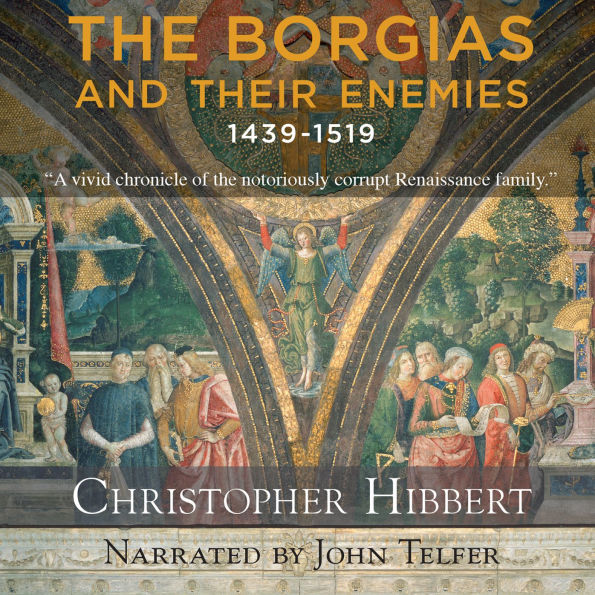Ill-focused, overstuffed portrait of the powerful Pope Alexander VI and his ambitious children, by prolific British historian Hibbert (Napoleon, His Wives and Women, 2002, etc.). Born Rodrigo Borgia in 1431, the ruthless, dissolute but rigorously competent family patriarch received the papal tiara in 1492, probably because of the ample bribes he bestowed. As Alexander VI, he worked to consolidate his position amid Rome's violence and squalor. He used his children by courtesan Vannozza de' Catanei to great political advantage, and Hibbert's spotlight flickers intermittently on them. Beautiful, accomplished daughter Lucrezia was married off several times, first into the illustrious Sforza family and later to the Duke of Este. Eldest son Cesare, made a cardinal at age 18, showed his prowess best in seducing women and in the field of battle. Alexander VI sided with Naples against the avaricious advances of France and Milan, and in gratitude Alfonso II of Naples in 1494 gave his daughter Sancia in marriage to the pope's 12-year-old son Jofre. However, when King Louis XII offered Cesare a French duchy and a French bride in 1498, the ever-opportunistic young man cast off his cardinal's hat and headed up France's invading forces. Cesare made glorious conquests in Romagna, hiring Leonardo da Vinci as his architect and general engineer and becoming the "splendid and magnificent" prince described by Niccolo Machiavelli in 1502. Nonetheless, the secretive, unscrupulous Borgias had many enemies, and Cesare's position was drastically weakened by his father's death in 1503. His lands were confiscated, and he was twice imprisoned before his death during a siege in 1507. Lucrezia managed to outlive herfamily's infamy and died an estimable lady of Ferrara in 1519. Hibbert is so preoccupied with the admittedly juicy ins and outs of the Borgias' political maneuvers that he neglects to offer much in the way of human interest. Knowledgable but not particularly compelling.
The first major biography of the Borgias in thirty years, Christopher Hibbert's latest history brings to life the family and the world they lived in: the glittering Rome of the Italian Renaissance.
The name Borgia is synonymous with the corruption, nepotism, and greed that were rife in Renaissance Italy. The powerful, voracious Rodrigo Borgia, better known to history as Pope Alexander VI, was the central figure of the dynasty. Two of his seven papal offspring also rose to power and fame-his daughter Lucrezia and her brother Cesare, who murdered Lucrezia's husband and served as the model for Machiavelli's The Prince. The Borgias were notorious for seizing power, wealth, land, and titles through bribery, marriage, and murder. The story of the family's dramatic rise from its Spanish roots to the highest position in Italian society is an absorbing tale.
The first major biography of the Borgias in thirty years, Christopher Hibbert's latest history brings to life the family and the world they lived in: the glittering Rome of the Italian Renaissance.
The name Borgia is synonymous with the corruption, nepotism, and greed that were rife in Renaissance Italy. The powerful, voracious Rodrigo Borgia, better known to history as Pope Alexander VI, was the central figure of the dynasty. Two of his seven papal offspring also rose to power and fame-his daughter Lucrezia and her brother Cesare, who murdered Lucrezia's husband and served as the model for Machiavelli's The Prince. The Borgias were notorious for seizing power, wealth, land, and titles through bribery, marriage, and murder. The story of the family's dramatic rise from its Spanish roots to the highest position in Italian society is an absorbing tale.

Editorial Reviews
Product Details
| BN ID: | 2940169691085 |
|---|---|
| Publisher: | Blackstone Audio, Inc. |
| Publication date: | 02/01/2012 |
| Edition description: | Unabridged |
Videos



